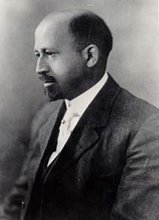Let the Most Popular Candidate Win
Ross Perot. Ralph Nader. Like theirs, my face is pinned up on the dart boards of angry partisans everywhere. I was bitterly accused of spoiling the 1980 election and helping Ronald Reagan beat Jimmy Carter.
But the real culprit is America's practice of plurality voting, by which candidates win without an absolute majority. In this system, third-party hopefuls can rarely aspire to be more than "spoilers." Worse, the one-third of all voters who are not registered as Republican or Democrat feel pressured to vote against their worst nightmare rather than their best hope.
A simple reform would correct this problem. Instant runoff voting (IRV), which lets voters rank their choices, would allow America to achieve the basic goal of its electoral system – electing the candidate with the most support.
(Former Illinois Congressman John B. Anderson was an independent candidate for president in 1980 and is chair of FairVote, a nonpartisan electoral reform organization based in Maryland.)
Full article here from the Christian Science Monitor















3 comments:
This article unfortunately repeats common myths about IRV. The truth is that better and simpler methods than IRV exist - and IRV is lethal to third parties, because voting for a non-major-party candidate is statistically more likely to hurt you than help you. The world needs Range Voting or its simplified form of Approval Voting. Here's why.
Consider this hypothetical election using IRV.
#voters - their vote
10 G > C > P > M
3 C > G > P > M
5 C > P > M > G
6 M > P > C > G
4 P > M > C > G
C is the clear Condorcet (condor-SAY) winner, meaning he is preferred by a landslide majority over all his individual rivals. C is preferred over G, P, and M all by an 18-10 margin.
But... M wins, even though he also has fewer first-place votes (6 voters) than C with 8.
Also:
1. P is preferred to M by 22 of the 28 voters, yet he's the first candidate eliminated.
2. G also has more first-place votes (10) than M's 6.
3. So M either loses pairwise to, or has fewer first-place votes than (or both) every rival, but still IRV elects M.
The example above was intended to be "realistic," perhaps somewhat resembling the situation in the (now evolving) 2008 US presidential race with G="Green", M=McCain, C=Edwards, and P=Paul. But if you are willing to drop realism and construct artificial election scenarios, then this demonstrates how to construct arbitrarily-severe election examples of this kind: http://rangevoting.org/IRVamp.html#bad
IRV sounds initially appealing, because people picture a weak third party candidate who loses in the first round. The myth is that this takes away the fear of voting for your sincere favorite candidate, and gives third parties a fair chance to grow; but if that candidate or his party ever grows to be a contender, he is statistically more likely to hurt the party closest to his own than to win. It doesn't matter how unlikely you imagine the above scenario to be - it's still _more_ likely than the odds "Green" will win. And so third party voters will learn to strategically vote for their favorite major-party candidate, because it will more often be a good strategy than a bad one. You don't have to buy my math; you can look at decades of IRV usage in Australia's house, and Ireland's presidency. Both use IRV, and have been two-party dominated. So much for the myths that IRV allows you to "vote your hopes, not your fears", and eliminates spoilers. Now you can see why the Libertarian Reform Caucus calls IRV a "bullet in the foot" for third parties, and why Australian political analysts at AustralianPolitics.com say that IRV "promotes a two-party system to the detriment of minor parties and independents." Ironically, most of the many countries in the world who use a genuine _delayed_ runoff have broken free of duopoly. Yet third parties just worked to help replace that system with IRV in Oakland, CA. This can be chalked up to a result of massive public ignorance, largely perpetuated by groups such as FairVote and the League of Women Voters (http://RangeVoting.org/Irvtalk.html).
Electoral reform advocates (especially third parties!) should be demanding Range Voting - score all the candidates and elect the one with the highest average. Its simplified form, Approval Voting, is probably the most feasible to implement. It simply uses ordinary ballots, but allows us to vote for as many candidates as we like. Consider the benefits:
* More resistant to strategy: As we see above, IRV strategically "forces" voters not to top-rank their sincere favorite; the general strategy with IRV is to top-rank your favorite of the front-runners (typically the major party candidates). But with Range Voting and Approval Voting, this _never_ happens. The worst a voter may do is exaggerate his sincere scores to the max and min scores allowed. But with Range Voting, a vote for your favorite candidate can never hurt you, or the candidate, whereas with IRV it can hurt both. -- http://RangeVoting.org/StratHonMix.html
* The previous fact helps to explain why IRV results in two-party duopoly, just like plurality voting. -- http://RangeVoting.org/TarrIrv.html
* Spoiler free: Whereas IRV merely _reduces_ spoilers. -- http://rangevoting.org/FBCexecSumm.html
* Decreases spoiled ballots: Since voting for more than one candidate is permissible, the number of invalid ballots experimentally goes down with Range and Approval Voting. But IRV typically results in a seven fold increase in spoiled ballots when we started using IRV. -- http://rangevoting.org/SPRates.html
* Simpler to use: In 2006, the Center for Range Voting conducted an exit poll experiment in Beaumont, TX. There were 5 gubernatorial candidates, and voters were allowed to rate them 0-10 (or "abstain"). They all seemed to find the process as simple and intuitive. There were no complaints of complexity, or any questions for clarification. And the fact that spoilage rates go down with Range Voting, but up with IRV, shows that there is some objective sense in which RV is simpler. Voters literally make fewer mistakes.
* Simpler to implement/tabulate: A simple one-round summation tells us the results, whereas IRV's potential for multiple rounds can cause long delays before the final results are determined. A positive side-effect of Range Voting's simplicity is that it makes the necessary transition to manual counting, and away from voting machines, more feasible. And Range Voting can be conducted on all standard voting machines in the interim. Whereas IRV's complexity leads most communities implementing it to purchase expensive and fraud-conducive (electronic!) voting machines, the fraudster's best friend. -- http://RangeVoting.org/Complexity.html
* Greater voter satisfaction: Using extensive computer modeling of elections, a Princeton math Ph.D. named Warren D. Smith has shown that these methods lead to better average satisfaction with election results, surpassing the alternatives by a good margin. But IRV turns out to be the second _worst_ of the commonly proposed alternatives. This mean that all voters will benefit from the adoption of either of these superior voting methods, regardless of political stripe. -- http://RangeVoting.org/vsi.html
* Reduces the probability of ties: While they are not extremely common, they do happen. IRV statistically increases them, but Range Voting decreases them. -- http://RangeVoting.org/TieRisk.html
* In case you're going to say, "But IRV has more _momentum_ than Range Voting", you should consider this. -- http://RangeVoting.org/IRVsplitExec.html
* In case you wonder why groups like FairVote and the League of Women Voters support IRV, maybe you should consider all the misleading and even patently false claims they've made about it. -- http://RangeVoting.org/Irvtalk.html
Get the facts at RangeVoting.org and ApprovalVoting.org
And if you're in the market for a better system of proportional representation (http://RangeVoting.org/PropRep.html) than the antiquated STV system, check out Reweighted Range Voting and Asset Voting.
http://RangeVoting.org/RRV.html
http://RangeVoting.org/Asset.html
Clay Shentrup
San Francisco, CA
415.240.1973
clay@electopia.org
Hello Broken Ladder
I was expecting you to comment at some point when an article about IRV appeared in this blog. I am someone who favors electoral reform of some sort and is willing to consider all good, practical options -- including Range Voting.
I lean towards IRV because their efforts indeed has real-life momentum whereas I have still to find out about any real-world efforts to promote Range Voting in actual elections. The most I have read about Range Voting is when advocates of range Voting such as yourself argue with advocates of IRV on the Internet.
Are there any examples of Range Voting being adopted in real-life elections in any level? Do any efforts exist to try and put it to a referendum to be adopted in City Council, city, state, school board elections, etc?
Range voting folks generally focus on sectarian attacks on other reforms. You should see their range voting page -- goes after all kinds of other reforms.
IRV is popular for a reason. Voters like it. See instantrunoff.com for more info.
Post a Comment